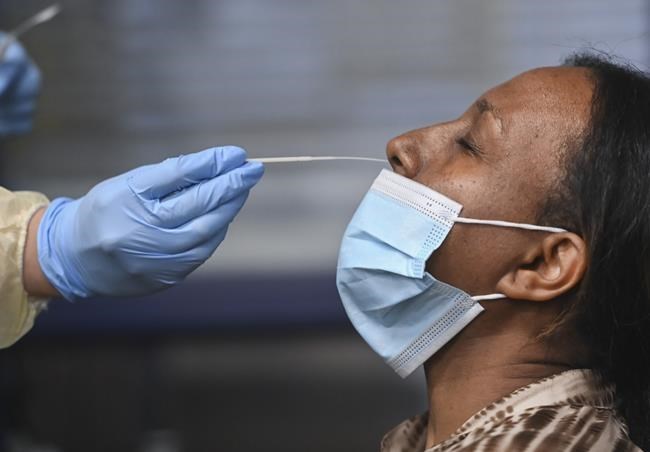TORONTO — A new study finds that long COVID has significantly increased doctor visits, home care needs and hospitalizations for a small portion of Ontario residents infected at the start of the pandemic.
TORONTO — A new study finds that long COVID has significantly increased doctor visits, home care needs and hospitalizations for a small portion of Ontario residents infected at the start of the pandemic.
Researchers say this does not bode well for a healthcare system, which was further hit by an Omicron surge earlier this year and is now bracing for an expected fall and winter surge.
“Many of us are concerned about how we’re going to care for those … with cancer, heart attacks, and strokes, as well as trying to fill the backlog of care that hasn’t been managed for the past few years,” says co-author and emergency room physician Dr. Candace McNaughton.
The study, published Monday in the Canadian Medical Association Journal, examined the healthcare utilization of 531,702 Ontario residents who undertook PCR testing between January 1, 2020 and March 31, 2021.
The researchers focused on a relatively small group of Ontarians who sought COVID-19 treatment eight weeks or longer after being diagnosed. Their results suggest that this cohort spent, on average, 50 percent more days in the hospital than their uninfected peers.
At the high end, the analysis suggests that one percent of women spent six and a half more days in hospital and received 28 more home care visits per year than usual. One percent of men had to stay in hospital about nine days longer but required less home care .
Although 1 percent is a small proportion, this subgroup’s outsized demand for increased medical care has strained resources that have only become scarce this year, McNaughton says.
She pointed to a significant increase in COVID-19 infections since the study began, as well as critical staffing shortages that have led to longer stays in emergency rooms and overwhelmed children’s hospitals.
The report concludes with calls for significant restructuring and investment in healthcare.
“Just under a year ago when we started our analysis, it looked like things were about to end. And we really hoped at the time that this would become a purely academic exercise,” says McNaughton.
“Canada has done a fantastic job of containing the spread of the virus, and compared to many other countries, there haven’t really been that many people who have been infected. But about a year later, more than half of Canadians are infected, and so 1 percent of half the country is a pretty big deal.”
According to the COVID-19 Immunity Task Force, the more contagious omicron variants have spurred cases throughout 2022 to infect 62 percent of Canadians by September — up from just 5 percent in August 2021 before the Delta Wave.
McNaughton says it’s not clear how long COVID cases are impacting the current crisis many hospitals are facing, but she’s seen patients “who have been in the ER 12, 16, 18 hours with complications from a previous one.” spend COVID infection”. With PCR tests no longer readily available, she said it is now difficult to confirm COVID infections.
So much of long COVID continues to confuse clinicians, she adds.
“Patients often have to go to several doctors to find out what is going on. And once they’re diagnosed with long COVID, we don’t have a treatment for it that we know is effective. So they try a bunch of different things,” she says.
“For someone who is already unwell and feeling pretty bad, navigating the healthcare system can be a tremendous burden for them and their family.”
She says the study’s findings also make a good case for a return of mask requirements indoors, especially as flu season also approaches.
Previous infection doesn’t guarantee you won’t contract COVID-19 again, she says, and even mild cases can result in what’s known as long COVID, which is most often defined by symptoms lasting longer than three months.
McNaughton says she would like the government to invest more in hiring and retaining nurses, improve indoor ventilation and resume COVID-19 surveillance measures to better inform the public about infection risks.
“I am confident that individuals, governments and healthcare leaders can view this information and plan ahead for how they will use the resources available,” said McNaughton, a physician at the Sunnybrook Research Institute in Toronto.
“Where do we put our efforts and time and manpower and money in the future within the competitive landscape?”
This report from The Canadian Press was first published on October 17, 2022.
Cassandra Szklarski, The Canadian Press
#Study #warns #potential #healthcare #burden #long #COVID #patients


Leave a Comment